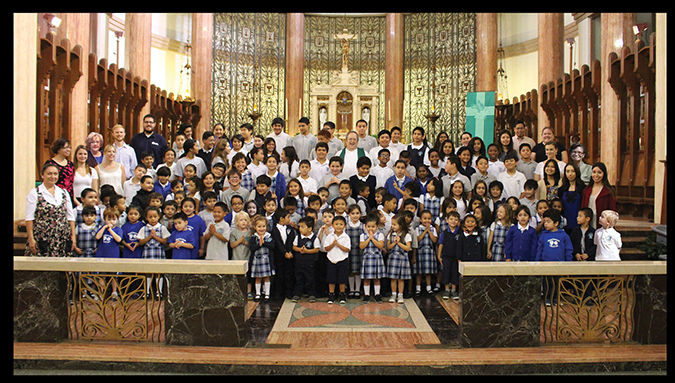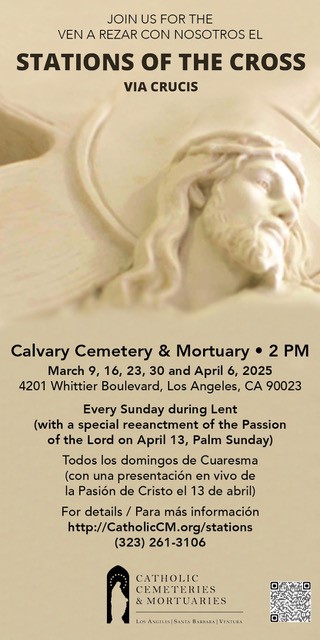In 1915 in the heart of Hollywood, near the dawn of the infamous city’s Golden Age, a small, modest Jesuit school opened its doors for the first time with a grand total of 17 students enrolled.
Today Blessed Sacrament School — which now has a student body of 150, from pre-K through 8th grade — is preparing to launch its centennial celebration Feb. 7 with a Mass, open house and luncheon fundraiser.
Jesuit Father Gregory Boyle, founder and executive director of Homeboy Industries, will be the special guest and will celebrate a special anniversary Mass at 11 a.m. in Blessed Sacrament Church. The luncheon that follows will be catered by the Homeboy Industries food truck, with tickets available for $35 each. A portion of event proceeds are earmarked to help support school scholarships and operations.
In anticipation of the anniversary luncheon and the parish’s annual STAR Awards on April 25 — which will honor several prominent local Catholics, including Father Boyle, actor Eduardo Verástegui and others — Yolanda S. Brown, parish life director at Blessed Sacrament Church, and Raphael “Rocky” Domingo, principal of Blessed Sacrament School, shared a few historical tidbits and present-day highlights about the school with The Tidings.
Originally founded on Hollywood Boulevard, Blessed Sacrament School and Church were both relocated to their current locations on Sunset Boulevard in 1923. The new parish structures were both designed in the Italian Renaissance style by Thomas Franklin Power and were later designated as official historic landmarks.
Despite the parish’s historical significance and celebrity-rich history — especially during Hollywood’s heyday, when John Wayne, Ricardo Montalban, Bing Crosby, Shelley Fabares and many others were either parishioners, students or had children in the school — the school’s mission over the past 100 years has always remained the same: “To provide a quality Catholic Jesuit education.”
“Regardless of who the students are who come here, this mission has always been present; it’s what we always strive for,” said Domingo. “Students are craving an education that is well rounded. … Educating the whole person is important. The goal of a good Catholic elementary school education is to create a solid foundation that [encourages] a love of learning.”
Brown lauded the “uniqueness” and effectiveness of the school’s present-day “blended learning” model, which provides independent, small group and teacher-led curriculum, to encourage “students to learn in three different modes.”
“Blended learning enables students to learn at their own speed and receive special attention, [to] enhance their learning experience,” Brown explained.
Currently, 62 percent of Blessed Sacrament students are Latino, 22 percent are Filipino, and the remaining are Anglo, black or other races/ethnicities, creating an “intercultural” makeup with one significant shared trait: 90 percent are Catholic.
“Each group has its own foods, its own music, its own traditions and faith practices, so what we do here is listen to one another, we plan [parish and school events] together, and invite each other to help bring us all together,” she said.
In addition, the archdiocese has designated Blessed Sacrament as a Media Arts Magnet School for its strengths in teaching responsible communication skills that help foster “excellence in academics, self-expression and community building.”
For Beatrice Girmala, who attended Blessed Sacrament from 1969 to 1977, the school provided “a priceless foundation for a successful future.” Currently a commander with the Los Angeles Police Department, Girmala is slated to become a deputy chief this coming April following 29 years of professional service.
“The faculty selflessly invested their time, talent and genuine caring into each student, instilling a sense of value and self-worth,” recalled Girmala, who oversees all law enforcement operations within the LAPD’s West Bureau, including Koreatown, Wilshire, Hollywood, West Los Angeles, Venice and LAX Airport.
“To this day, I credit the gift of my Catholic school education with providing the key cornerstones for a life lived in service and consideration of others,” she said.

